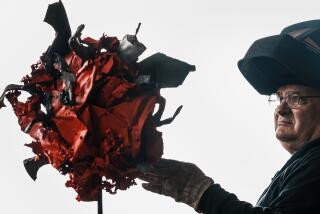From a Hub of Soviet Might to a Backwater
- Share via
PETROPAVLOVSK-KAMCHATSKY, Russia — To drive the coastal highway of this port city on the Bering Sea or to go out to its airport is to navigate an obstacle course of potholes, bouncing past blocks of crumbling apartment buildings. Compensating for the jarring ride is the natural beauty of Avacha Bay and the two majestic volcanoes that overlook this once-closed provincial capital.
In Soviet times, the secretive nuclear submarine bases and other military facilities here on the Kamchatka peninsula were so strategically sensitive that after a Korean Air Lines jumbo jet strayed off course and flew over the region in 1983, it was feared to be a U.S. reconnaissance aircraft and shot down. All 269 people aboard the New York-to-Seoul flight were killed.
Those days seemed a distant memory when military teams from Britain, the United States and Japan raced here early this month in a successful effort to save seven crew members trapped underwater for days in a Russian mini-submarine that had become entangled in military antenna cables and old fishing nets.
But the collapse of the Soviet Union, which led to warmer ties between Moscow and the West, also resulted in military spending cutbacks that have plunged this city into hard times. Many submarines have been decommissioned.
“Changes have mostly been for the worse, unfortunately,” taxi driver Mikhail Chugunov said as he maneuvered along the coastal road, which overlooks fishing and commercial harbors packed with hundreds of rusting cranes used to unload ships.
“There are social problems, problems with the apartment buildings,” he said. “The condition of apartments is really poor. There’s no repair and restoration work. Practically nothing is being done. Even the roads haven’t been maintained for a long time.”
Many people reacted by leaving town. Since 1989, the population has dropped from 269,000 to about 185,000.
Alexander Pershin, a military base employee, said he felt regret over the diminishing Russian military presence. But he said he drew comfort from the area’s natural beauty, which survived largely because of an underdeveloped economy that is primarily dependent, as it was during Soviet days, on the military and the fishing industry.
“I’ve never seen such beauty as here -- the nature, such clean air, clean water,” he said. “There’re no chemical plants here, no factories. That’s why it’s so clean. Americans must be envious of our clean water. In the United States, you can’t drink water out of the river, and here you can do that.”
Little pre-Soviet architecture remains in this city, 5,000 miles and nine time zones east of Moscow. Post-Soviet construction of supermarkets and some other buildings has been undertaken, but most of the city consists of poorly maintained multi-story apartment, commercial and office blocks -- many built of concrete.
A huge statue of Soviet founder Vladimir I. Lenin remains standing in the city’s main square. A few attractive wooden buildings hint at the nature of the frontier town this was in Czarist days.
Petropavlovsk-Kamchatsky -- the name means Peter Paul of Kamchatka -- has a rich history. The city was founded in 1740 by Vitus Bering, a Danish-born captain who explored northeastern Siberia on behalf of Russian Czar Peter the Great and his successors. Bering named the city after his ships, the Saint Peter and the Saint Paul.
In 1779, the log-cabin settlement was visited by a British exploration team led by Capt. Charles Clerke. His ships, the Discovery and the Resolution, previously had been commanded by the famed explorer Capt. James Cook.
In 1854, British and French forces sailed into Avacha Bay during the Crimean War, which pitted Britain, France and the Ottoman Empire against Russia. But that August attack was repulsed by the city’s defenders, and monuments to the Russian victory still stand.
Since the collapse of the Soviet Union and the subsequent opening of Kamchatka to foreigners, efforts have been made to develop a tourism industry on the peninsula, which is about two-thirds the size of California. Natural attractions include about two dozen active volcanoes; the Valley of the Geysers, sort of a Kamchatkan Yellowstone; brown bears that are slightly larger cousins of the American grizzly; and fishing that attracts Americans who take helicopters from the provincial capital to vacation spots.
Taxi driver Chugunov, who spent three years in Moscow before returning to his hometown, said that nature is the only thing better here than in the nation’s capital. The 38-year-old still gets a thrill, he said, from seeing bears or foxes from the road when he drives through the countryside.
Dmitry Dadonov and Galina Verigina, a married couple who are both doctors, bemoaned post-Soviet reforms that failed to make life better.
“The changes are really slow in this city,” Verigina said. “The death rate is really big here.”
She linked the decline of the local life expectancy rate since Soviet days to “low salaries, a low level of life.”
Pressed for more specific medical reasons, her husband cited cancer, heart problems and accidents, adding that smoking, heavy drinking and a poor diet were underlying factors.
“Now there are lots of alcoholics among kids, and lots of them are into toxic drugs,” Dadonov said. “They sniff gasoline and glue.”
But Alexander Ilyushin, a retired military man, had a more upbeat view, noting the construction of buildings in recent years, the port and ship repair facilities and the fishing industry.
He lamented, however, the cutbacks in military spending, which in the eyes of some Russians was reflected by the need to turn to foreigners for help during the mini-submarine crisis. This is, after all, a city that still loves its military.
“People who don’t want to feed their own army,” Ilyushin said, “will have to feed their enemy’s army.”
More to Read
Sign up for Essential California
The most important California stories and recommendations in your inbox every morning.
You may occasionally receive promotional content from the Los Angeles Times.













